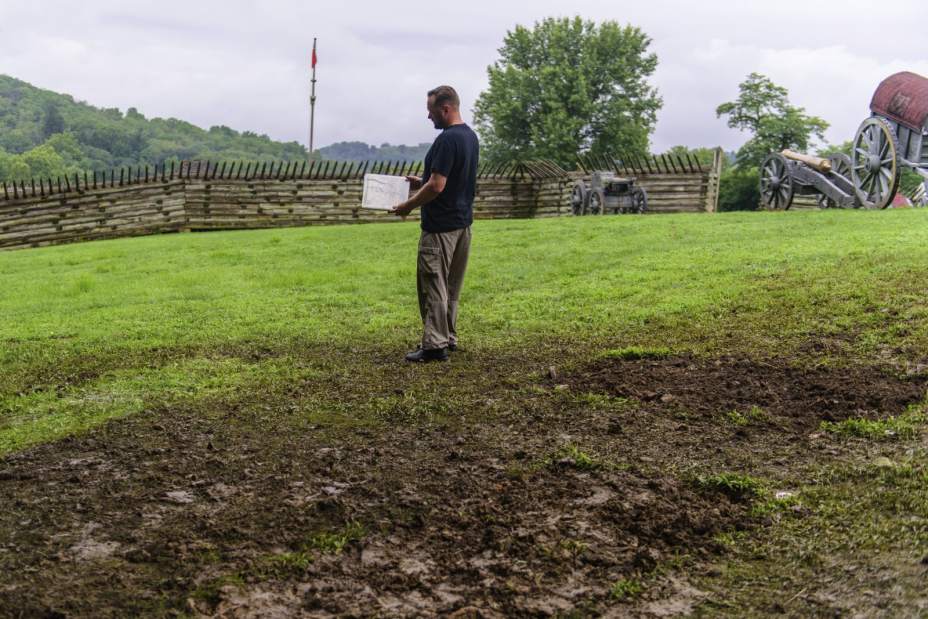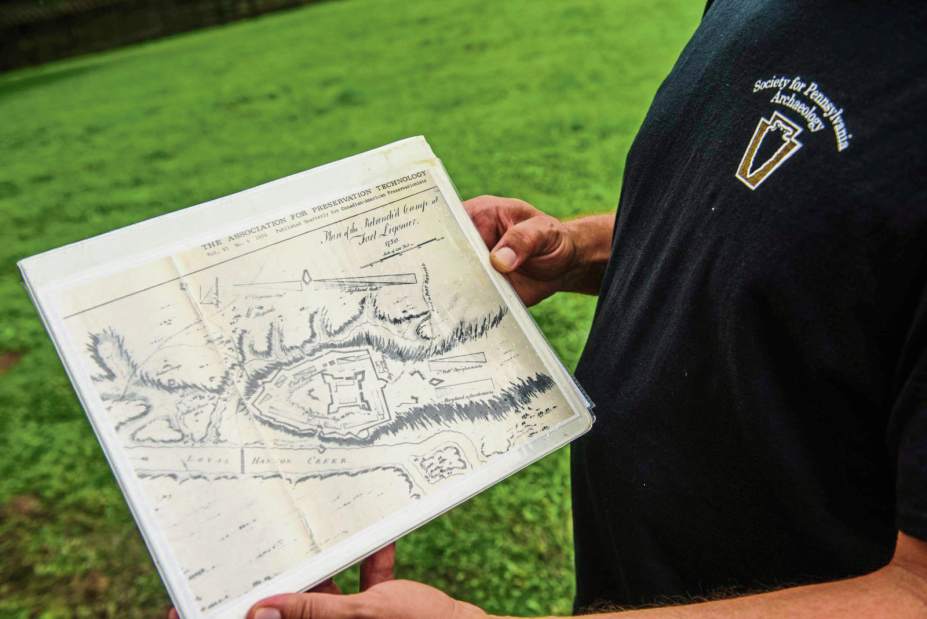Fort Ligonier dig seeks site of wartime battery
Digging for history at Fort Ligonier
Archeologists search for an artillery battery on the backside of the fort.
Fort Ligonier officials believe they are closer to unearthing a lost wartime battery just outside the log walls of the reconstructed 1750s-era site.
“If we can find it, then they can (re)build it,” said Jonathan Burns, a Juniata College professor and the leader of the effort in digging two 30-foot-long trenches about 2 feet deep to find the battery built outside of the eastern edge of Fort Ligonier.
Their methodical dig uncovered an archaeological feature — evidence of soil having been dug out and then filled in the past, Burns said Thursday. But, they are unsure of its age or function.
“At the bottom of the pit, we found the remains of wood planks — which would have been a component of the battery,” Burns said.
It is somewhat promising, Burns said, because it is in the right location, based on the historic maps and the drone images taken by the team.
The battery was made of branches and dirt packed 7 feet high and surrounded by a ditch. Soldiers who stood behind the earthen mound fired a cannon at any approaching enemy, Burns said. The cannon would stand atop wooden planks to prevent it from sinking in the mud. The battery would be connected by wooden palisade, or fence, that could be used by soldiers for protection when going to the battery.
“It (dig) was very close to the battery. We will probably try to have them ‘fill in the blanks’ next year,” with another dig, said Brad Mooney, historic preservationist at Fort Ligonier.
Burns’ team of two archaeologists and two Juniata College students used maps of the fort from 1758 — the year of the battle against Native Americans — and aerial pictures from drones, to plot where they would dig. Their efforts received a big boost from about 25 members of Team Rubicon, a group of veterans who came from Boston, Harrisburg and West Virginia to lend a hand, said Burns, who has led digs at the Westmoreland County fort the past three years.
“We’ve been on the hunt for this thing,” said Burns, president of the Society of Pennsylvania Archaeologists.
He likened efforts to find the battery to a chess game, moving the dig sites “around the board.”
“Your next move is based on what you found in the last unit (trench),” Burns said.
If the archaeologists find the battery, which may have existed at the time of the battle, “the next thing you do is to put money together to build it,” Mooney said.
Joe Napsha is a
Tribune-Review staff writer.
You can contact Joe at 724-836-5252 or jnapsha@tribweb.com.


